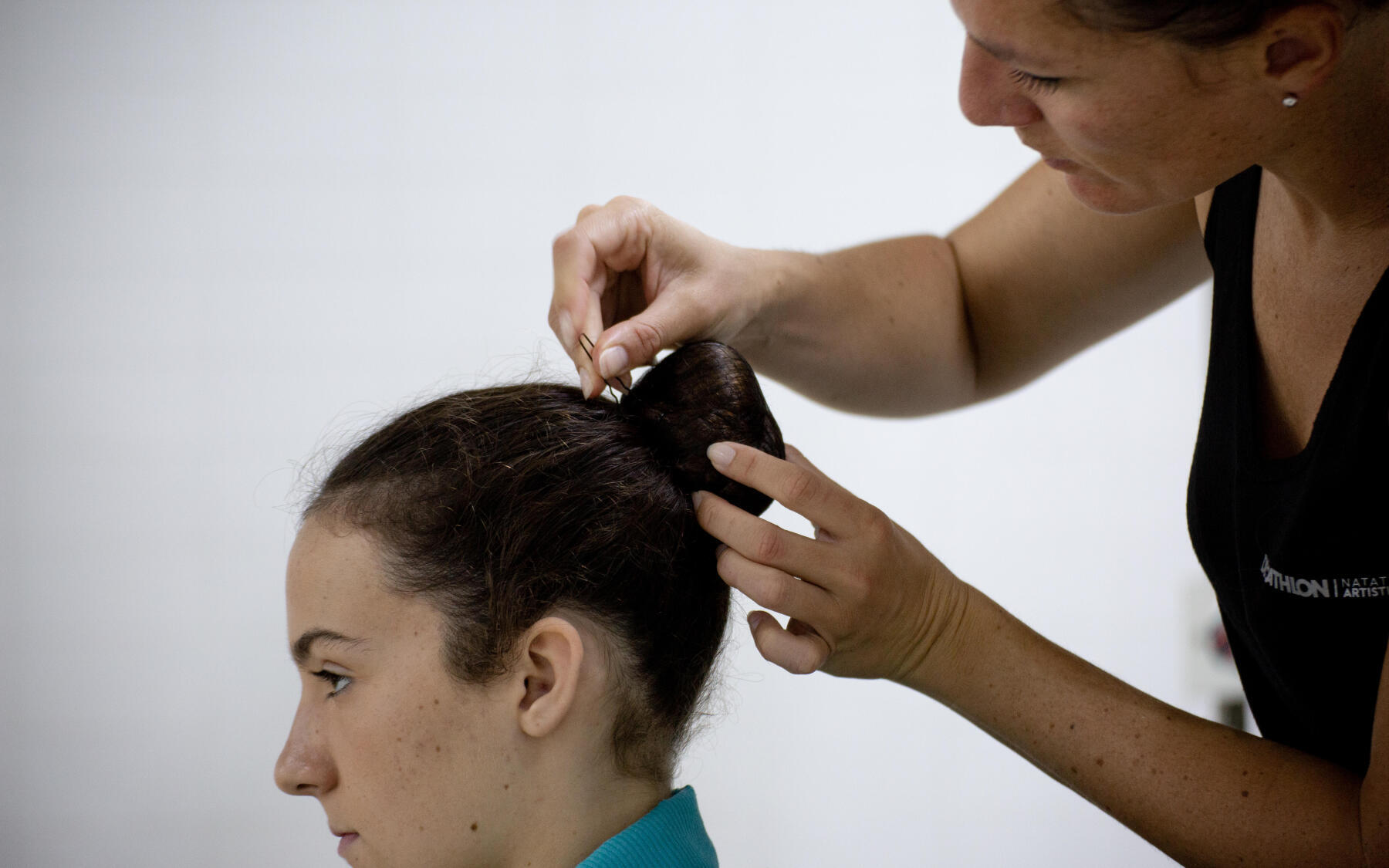How to achieve the perfect
artistic swimming bun
The first step to a successful bun is to wet your hair; it will be easier to style! Some swimmers then apply a mask or a hair product to their hair to make it easier to untangle… But that's up to you to try and see if it works for you!
Then, of course, you have to brush your hair thoroughly so that you can scrape it back for the next step: the ponytail.
The best thing is to pull the hair back with a comb so that everything is
as smooth as possible: the top of the head, the sides, the bottom... there should be no lumps and bumps. The ponytail should be about halfway up the head; confer with your team-mates on the location of the bun!
Wrap your hair band around as many times as you can to hold the hair securely in place. Once tied up, there are several techniques out there. One is to wrap the hair around the ponytail, pulling it tightly, and not letting any stick out, then secure all around the bun using hair pins.
Take care, these pins need to pass through both the bun and the slicked back hair along the head and ideally under the hair band too. The next step is to cover the bun with a hair net to make sure there is no hair sticking out!
You will also need to secure the net with more hair pins all around the bun.






